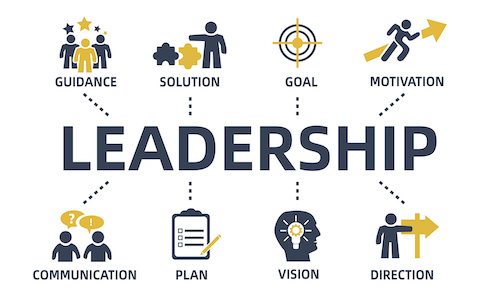In the ever-changing landscape of the business world, effective leadership stands as the cornerstone of success. From traditional models to modern approaches, the evolution of leadership styles has been crucial in navigating the complexities of the business environment. This article explores the dynamics of leadership in the USA, focusing on enterprises that have redefined the standards of successful leadership.
Evolution of Leadership

Historical Perspective on Traditional Leadership Models
Leadership has come a long way from autocratic and hierarchical structures to more collaborative and inclusive models. Understanding this evolution is key to appreciating the current state of leadership in the business world.
Transition to Modern Leadership Approaches
Contemporary leadership emphasizes collaboration, adaptability, and fostering a positive work culture. The shift is driven by the need for agility in response to rapid changes in technology and market dynamics.
Impact of Technological Advancements on Leadership Styles
In the age of digital transformation, leaders must embrace technology to enhance communication, decision-making, and overall organizational efficiency.
Key Characteristics of Successful Leadership
Vision and Strategic Thinking
Successful leaders possess a clear vision for the future and the ability to formulate strategic plans that align with organizational goals.
Effective Communication Skills
Communication is a linchpin of effective leadership. Leaders must convey their vision, expectations, and feedback with clarity and empathy.
Adaptability and Resilience
In a fast-paced business environment, leaders must adapt to change and demonstrate resilience in the face of challenges.
Empathy and Emotional Intelligence
Understanding and connecting with the emotions of team members fosters a positive work culture and enhances collaboration.
Case Studies: Leading USA Enterprises
Apple Inc.: A Visionary Leadership Case Study
Under the leadership of visionaries like Steve Jobs and Tim Cook, Apple Inc. has consistently demonstrated innovation and market leadership.
Amazon.com Inc.: The Impact of Customer-Centric Leadership
Jeff Bezos's customer-centric approach has played a pivotal role in Amazon's unprecedented growth and dominance in the e-commerce industry.
Google LLC: Innovation-Driven Leadership Success
Google's success is rooted in its commitment to innovation, with leaders encouraging a culture of creativity and experimentation.
Challenges in Leadership
Navigating Through Uncertainty
Leaders face the challenge of making decisions in uncertain and volatile environments, requiring a balance of risk-taking and strategic planning.
Balancing Innovation and Stability
The need for innovation must be balanced with maintaining stability, ensuring sustainable growth without jeopardizing organizational stability.
Diversity and Inclusion as a Leadership Challenge
Leaders must actively promote diversity and inclusion to foster an environment where all voices are heard and valued.
Strategies for Leadership Excellence

Continuous Learning and Development
Leadership is an ongoing journey of learning and development. Continuous education ensures leaders stay relevant and effective in a rapidly evolving business landscape.
Building a Diverse and Inclusive Workplace
Leaders should actively work towards creating a workplace that celebrates diversity and inclusion, recognizing the strength in differences.
Fostering a Culture of Innovation
Encouraging innovation requires leaders to create an environment where employees feel empowered to explore new ideas without fear of failure.
The Role of Leadership in Business Success
Influence on Organizational Culture
Leaders play a pivotal role in shaping the culture of an organization, influencing the attitudes and behaviors of employees.
Impact on Employee Engagement and Productivity
Effective leadership fosters high levels of employee engagement, resulting in increased productivity and overall satisfaction.
Connection Between Effective Leadership and Financial Success
Research consistently shows a strong correlation between effective leadership and financial performance, highlighting the tangible impact of leadership on the bottom line.
Future Trends in Leadership

Remote Leadership Challenges and Opportunities
As remote work becomes more prevalent, leaders must adapt to new challenges in communication, team building, and maintaining a cohesive corporate culture.
Integration of Artificial Intelligence in Leadership Roles
AI is increasingly playing a role in decision-making processes, requiring leaders to understand and leverage technology for strategic advantage.
The Evolving Role of Ethics in Leadership
Ethical considerations are gaining prominence, and leaders must navigate complex ethical dilemmas in their decision-making processes.
Conclusion
In the dynamic world of business, leadership remains the linchpin of success. As we've explored the evolution, characteristics, case studies, challenges, and strategies for leadership excellence, it is evident that effective leadership is not just a necessity but a catalyst for organizational success. The USA's enterprises, with their innovative and adaptive leadership styles, serve as beacons in the ever-evolving landscape.

.png)